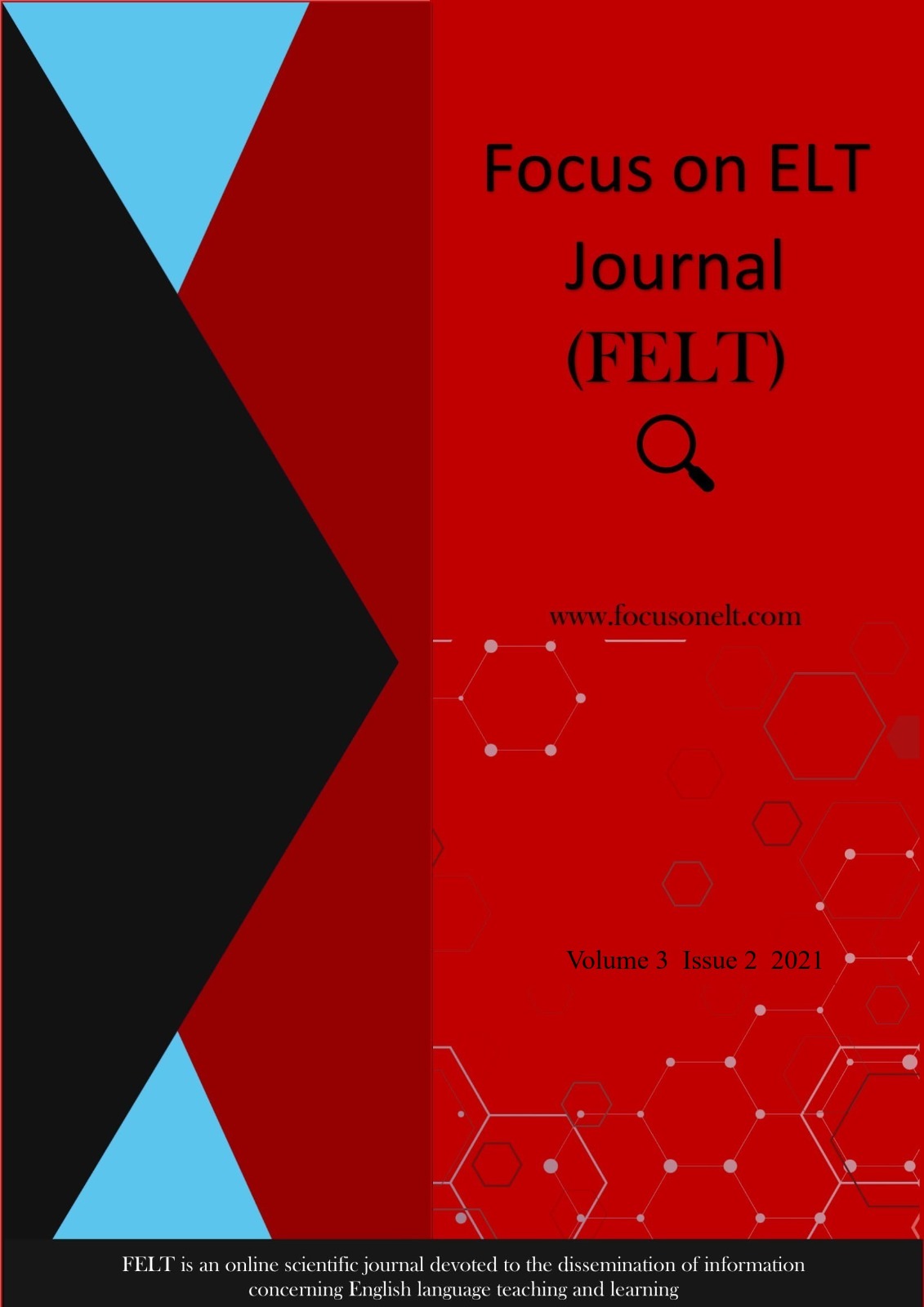An investigation into gender representations in an English coursebook
Main Article Content
Abstract
Since the stereotypical gender representations in coursebooks produce inequalities and lead to keep the existing inequalities in society, this issue of hidden curriculum was the focus of this study. This study aimed to investigate the four units of the ELT coursebook “Progress” in order to find out what occupational roles, leisure time activities and household activities are assigned to male and female characters, the proportion of male characters to female characters in images and how gender is positioned in the visual discourse. The results of the analysis reveal that the coursebook has positive messages in relation to gender representations but still has a sexist point of view in terms of the categories that were examined throughout the study. This indicates that there is an improvement regarding gender representations; yet, it does not present a fair representation of female and male characters in all categories.
Metrics
Article Details

This work is licensed under a Creative Commons Attribution-NonCommercial-NoDerivatives 4.0 International License.
References
Arslan, Ş. A. (2000). Ders kitaplarında cinsiyetçilik: Başbakanlık Kadının Statüsü ve Sorunları Genel Müdürlüğü Yayınları.
Arslan Özer, D., Karataş, Z., & Ruken Ergün, O. (2019). Analysis of gender roles in primary school (1st to 4th Grade) Turkish textbooks. Eurasian Journal of Educational Research, 79, 1-20.
https://doi.org/10.14689/ejer.2019.79.1
Aydınoğlu, N. (2014). Gender in English language coursebooks. Procedia-Social and Behavioral Sciences,158, 233-239. https://doi.org/10.1016/j.sbspro.2014.12.081
Bandura, A. (1971). Social Learning Theory. General Learning Press.
Bem, S. L. (1981). Gender schema theory: a cognitive account of sex typing. Psychological Review, 88, 354–364. https://doi.org/10.1037/0033-295X.88.4.354
Bilgin, H. (2013). Gender Representations in the 6th, 7th and 8th grade ELT Coursebooks by the Turkish Ministry of National Education (Master Thesis). Bilkent University, The Program of Curriculum and Instruction, Ankara.
Bogdan, R., & Biklen, S. K. (2007). Qualitative research for education: An introduction to theory and methods. Pearson A & B.
Bohan, J. S. (1992). Seldom seen, rarely heard: Women’s place in psychology. Boulder, CO: Westview.
Buss, D. M. (1995). Psychological sex differences: Origins through sexual selection. American Psychologist,50, 164–168. https://doi.org/10.1037/0003-066X.50.3.164
Chodorow, N. (Ed.). (1989). Feminism and psychoanalytic theory. Yale University Press.
Demir, Y., & Yavuz, M. (2017). Do ELT coursebooks still suffer from gender inequalities?: A case study from Turkey. Journal of Language and Linguistic Studies,13(1), 103-122.
Eagly, A. (1987). Sex differences in social behavior: A social-role interpretation. Erlbaum
Helvacıoğlu, F. (1996). Ders Kitaplarında Cinsiyetçilik 1928-1995. Kaynak Yayınları.
Khalid, Z., & Ghania, O. (2019). Gender positioning in the visual discourse of Algerian secondary education EFL textbooks: Critical Image Analysis vs. Teachers’ Perceptions. Journal of Language and Linguistic Studies, 15(3), 773-793. https://doi.org/10.17263/jlls.631510
Lakoff, R. (1975). Language and Women's Place. Harper and Row.
Mkuchu, S. G. V. (2004). Gender roles in textbooks as a function of hidden curriculum in Tanzania primary schools. Doctoral dissertation, University of South Africa.
Parsons, J. T. (1952) The Social System. Tavistock Press.
Porreca, K. L. (1984). Sexism in current ESL textbooks. TESOL Quarterly, 18(4), 704- 724.
Shields, S. A. (1975). Functionalism, Darwinism, and the psychology of women: A study in social myth. American Psychologist,30, 739–754. https://doi.org/10.1037/h0076948
Sivaslıgil, P. (2006). Gender Ideology in 6th, 7th and 8th Grade Coursebooks Published by the Turkish Mınistry of National Education (Master Thesis). The University of Çukurova, The Institute of Social Sciences, ELT Department, Adana.
Söğüt, S. (2018). Gender representations in high school EFL coursebooks: An investigation of job and adjective attributions. Abant İzzet Baysal Üniversitesi Eğitim Fakültesi Dergisi,18(3),1722-1737.
https://doi.org/10.17240/aibuefd.2018.18.39790-471184
Söylemez, S. A. (2010). Sexism in language coursebooks: A study on gender representations in the visuals of the primary and secondary education English coursebooks (PhD Thesis). Gazi University. Institute of Educational Sciences, ELT Department, Ankara.
Turkish Statistical Institute (2013). Gender Statistics. Turkish Statistical Institute, Printing Division. http://kasaum.ankara.edu.tr/wp-content/uploads/sites/34/2013/02/Toplumsal-Cinsiyet-Istatistikleri-2013-TUIK.pdf
United Nations (2019). Department of Economic and Social Affairs. World population Prospects 2019.
USDL Women‟s Bureau (2018). Employed persons by detailed occupation, sex, race and Hispanic or Latino ethnicity. Retrieved on January 10, 2020 from: https://www.bls.gov/cps/cpsaat11.htm
Williams, C. L. (1993). Psychoanalytic Theory and the Sociology of Gender. England, P. (Ed.). Theory on Gender: Feminism on Theory, (p. 131-149). Aldine De Gruyter.
Yılmaz, E. (2012). Gender representations in ELT coursebooks: A comparative Study. (Master Thesis). The Graduate School of Social Sciences of Middle East Technical University, Ankara.

